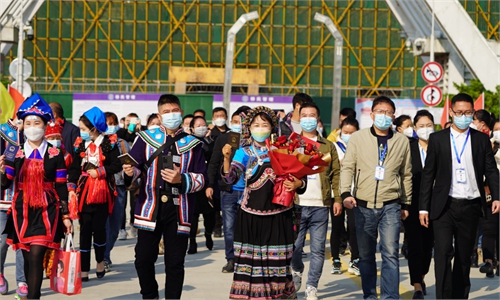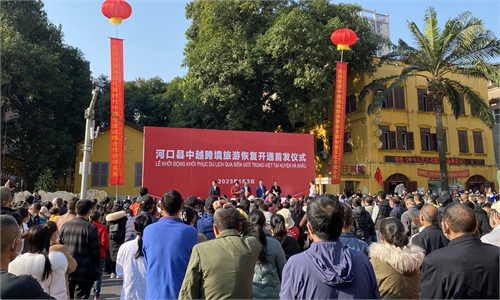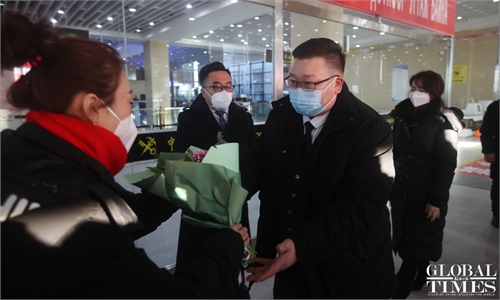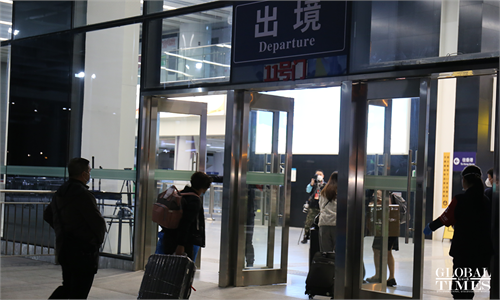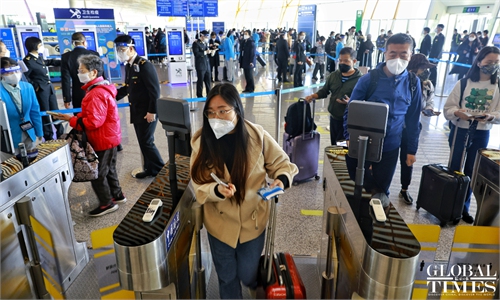GT on the spot: GT reporters visiting multiple ports, witnessing historic moments of lifting border restrictions
With China downgrading COVID management, cross-border travel and business resume in full swing
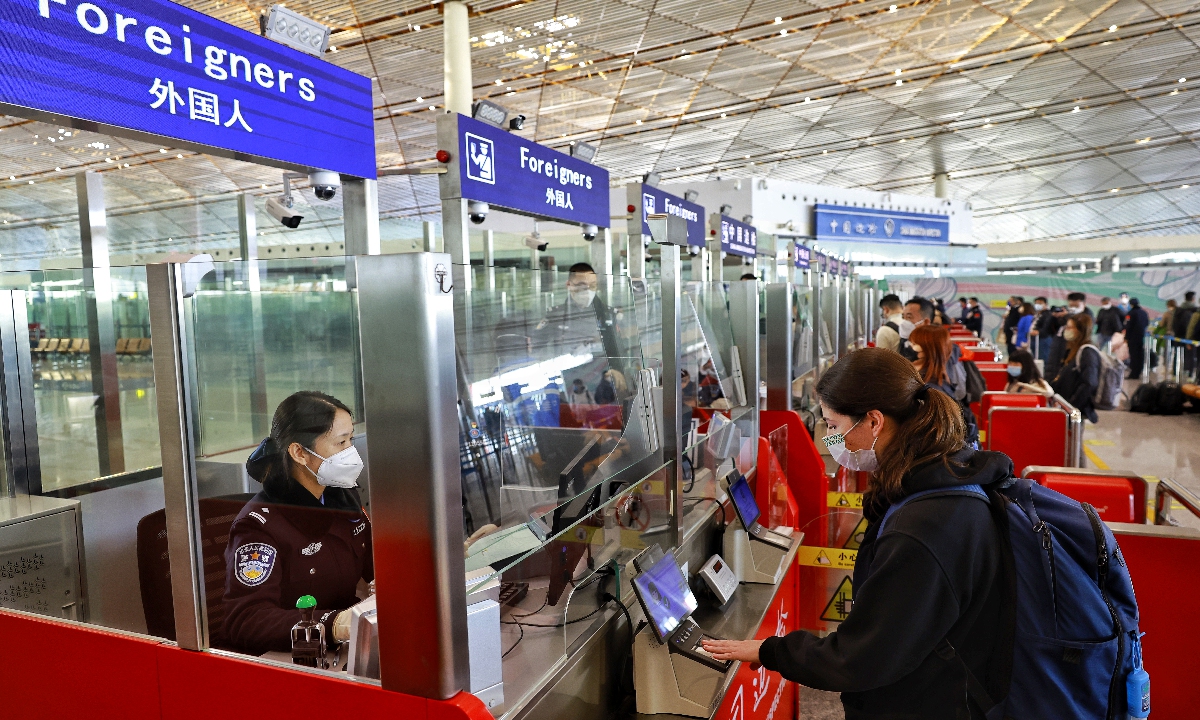
Passengers line up at border checkpoints at Beijing Capital International Airport on January 8, 2022, as the airport welcomed international passengers on the first day China downgraded its COVID measures. Inbound travelers will no longer be tested for COVID-19 at the airport or be transferred to specific hotels for quarantine. Photo: Li Hao/GT
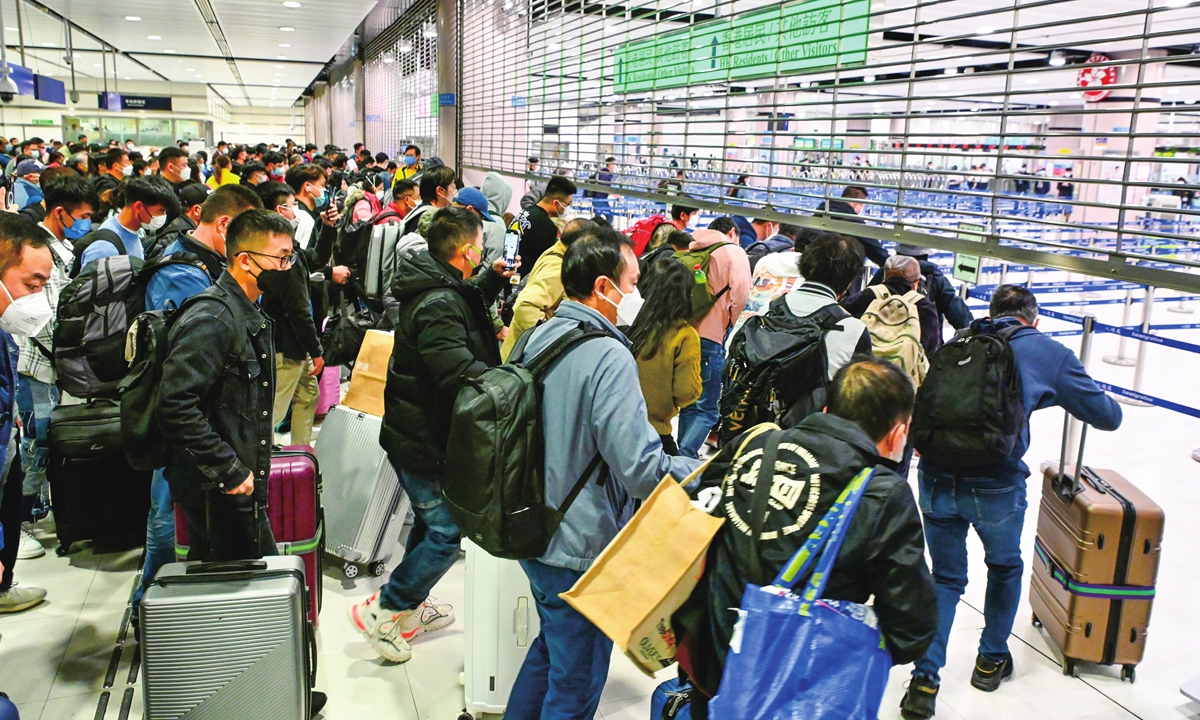
At about 6:30 am on January 8, 2023, a large number of passengers take the subway at the reopened Lok Ma Chau Station in Hong Kong to enter Shenzhen, South China's Guangdong Province. Photo: VCG
After an arduous three-year fight against COVID-19 which has gained valuable windows of opportunity for the country to better deal with the disease, China officially downgraded its COVID-19 management and lifted border restrictions on Sunday, which the world is closely watching with growing excitement and expectation for the reopening of the world's second-largest economy that will greatly boost global recovery in the post-pandemic era.Global Times reporters visited on Sunday a number of ports across the country from Beijing, the national capital, to a land port in Southwest China's Yunnan Province, to the Shenzhen-Hong Kong crossing points and to a land port in North China's Inner Mongolia Autonomous Region, witnessing this historic moment marking a new stage of China's anti-virus battle.
Flight CX344 from Hong Kong to Beijing with 291 passengers on board arrived at Beijing Capital International Airport at around 10:40 am, the first cross-border flight to land at the airport on Sunday, the day China downgraded its COVID-19 management measures from Class A to Class B.
Thrilled to be among the first batch of people enjoying the new adjustments for border entrance, a passenger surnamed Chang who was onboard the flight told the Global Times that "everything is just so smooth!"
As China downgraded its COVID-19 management measures, no more nucleic acid testing or closed-loop quarantines are required for people entering the country, and passengers only need to fill out a form on their phone and show a pass code at the customs, the Global Times observed at the Beijing airport.
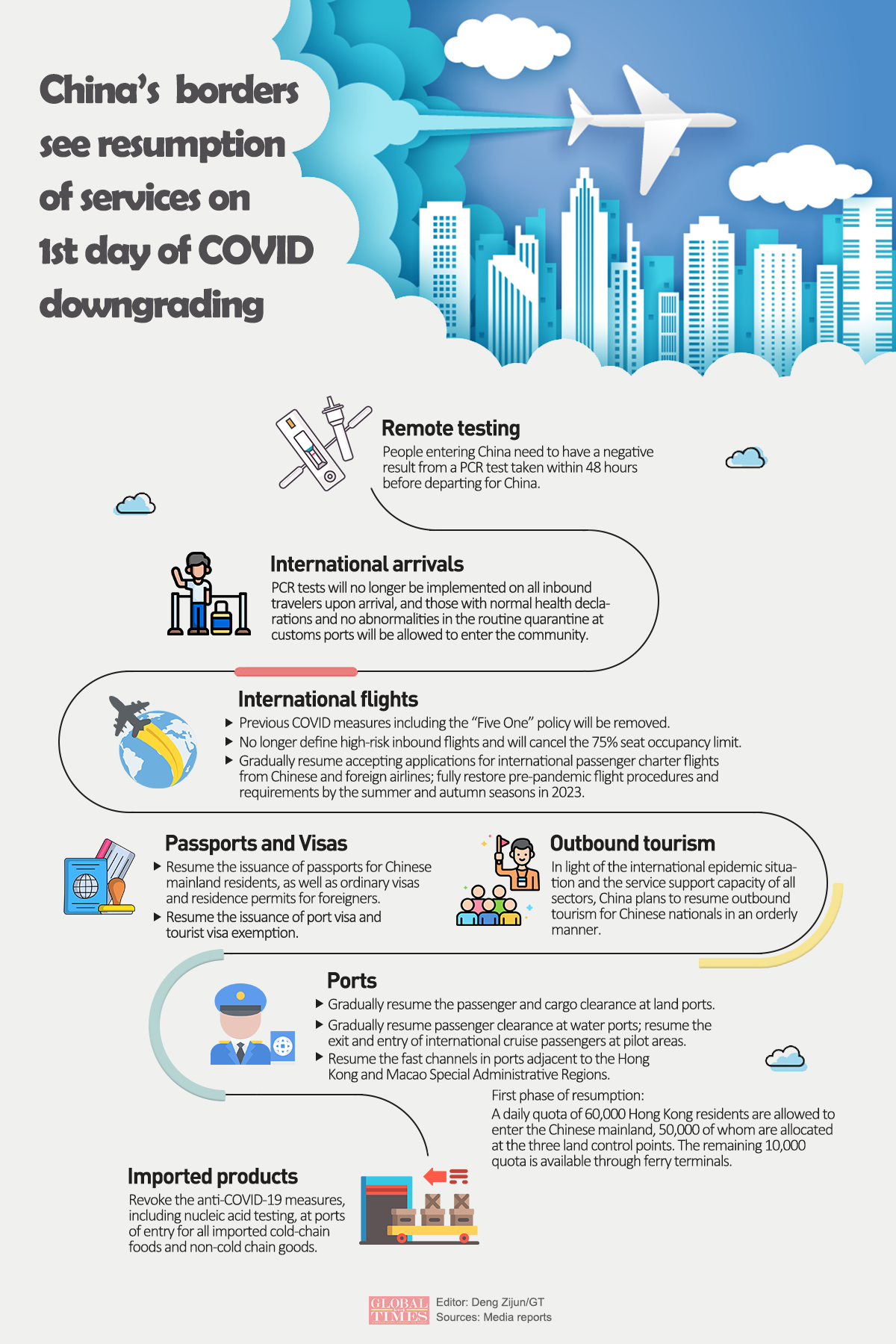
Graphic: Deng Zijun/GT
With the new policy in place, the warmth of hugging loved ones, the happiness of spending Chinese Lunar New Year with families, the excitement of visiting business partners, and most importantly, the reality of embracing "pre-pandemic normalcy," were palpable in the crossing points in Shenzhen that connect Hong Kong.Several ports in Shenzhen, including Futian and Wenjindu, were decorated with red lanterns and flowers, and sign boards with phrases such as "Welcome Home" and "We are Family" to welcome the influx of arrivals from Hong Kong.
Shenzhen authorities said that more than 1,600 individuals had registered to travel from Futian Port to Hong Kong on Sunday. About 200 passengers are expected to enter Hong Kong through Wenjindu Port, and 700 from Hong Kong to Shenzhen on the first day of the border reopening. The flow of passengers is expected to increase steadily in the coming days, Tan Luming, an official from Shenzhen port office, told the Global Times on Saturday.
About 1,500 kilometers from Shenzhen's Futian Port, the cross-border bridge connecting China and Vietnam was bustling with inbound and outbound travelers and vendors pouring into and out of the two neighboring countries via Hekou Port, Yunnan Province to resume normal business and trade after China reopened its borders on Sunday.
It is estimated that on the first day of the resumption of comprehensive customs clearance, the number of customs clearances will reach about 1,000 people at Hekou Port.
Having awaited this for almost three years, border residents from both countries crossed the China-Vietnam Nanxi River Bridge early on Sunday morning to celebrate the full resumption of cross-border traffic. Some travelers brought flowers along to greet and hug their loved ones from the other side in person for the first time since 2020 when the port closed due to the impact of COVID-19.
Similar excitement and hustle and bustle were palpable at Erenhot Port in Inner Mongolia, the largest China-Mongolia land port, on Sunday. A Chinese resident surnamed Zheng, the first passenger to pass the customs check from the Mongolian side, said the new management for declaration is more convenient than before.
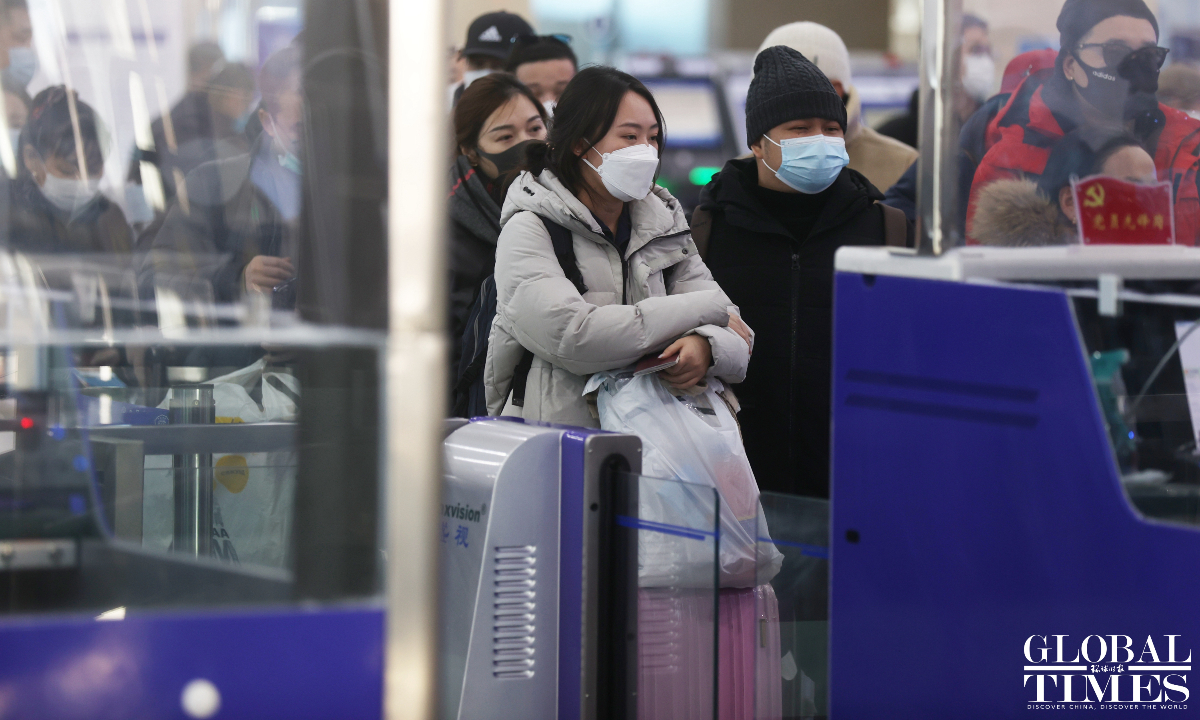
Erenhot Port in Inner Mongolia, the largest China-Mongolia land port on January 8, 2023. Photo:Cui Meng/GT
A new phaseWith China's management of COVID-19 being downgraded from Class A to Class B starting from Sunday, in accordance with the law on the prevention and treatment of infectious diseases, the country witnessed a major shift following a fully prepared battle during the past three years. From Sunday, the country has entered a new phase of its COVID response after gaining a profound knowledge of the virus and shifting the focus from preventing infections to preventing severe cases and providing medical treatment.
"Downgrading COVID management is not adopting a 'laissez-faire' attitude or 'let-it-go' to cancel all the epidemic prevention and control measures but to further emphasize prevention services and treatment," Liang Wannian, head of China's COVID-19 response expert panel under the National Health Commission (NHC), was quoted as saying in media reports on Sunday.
To effectively prevent risks, the most important job at the moment is to provide medical treatment, giving priority to treat severe cases while strengthening protection of key population groups such as the seniors, accelerating mass vaccination and enhancing treatment capabilities in rural areas, Liang said. Also, it is necessary to strengthen the monitoring of the viruses and pathogens, so if a new mutant strain or subtype appears, it can be quickly discovered, he said. "With early warning, we can take corresponding measures."
Some Western countries and media outlets shared mixed feelings about China's reopening, especially when some continue to politicize the epidemic by imposing some discriminatory and unnecessary travel restrictions against China arrivals.
In the other hand, Germany advised its nationals against nonessential travel to China given the surge in coronavirus infections, the German Foreign Ministry said on Saturday, DW reported on Sunday.
The US, Japan and South Korea are among countries that announced restrictions on travelers from China, citing concerns that the current surge of COVID-19 cases in China could lead to emergence of new variants.
Downgrading the epidemic management requires close monitoring of virus variants, and now we are monitoring mutated strains of the coronavirus and collecting samples every day, Wu Zunyou, chief epidemiologist of the Chinese Center for Disease Control and Prevention, was quoted as saying in media reports on Sunday.
"According to the current results, all the strains we have discovered so far are strains that have been shared on global sharing platforms, which means they were mainly introduced into China after they became widespread in the rest of the world," he said. "No new mutant strains have been found in China."
Political factors have played a key part in implementing travel restrictions against China arrivals despite of health and science perspectives, experts said.
Wang Peiyu, a deputy head of Peking University's School of Public Health, told the Global Times on Sunday that while strict anti-COVID measures, including nucleic acid testing before boarding the plane and after arrival as well as quarantines, will to some extent fend off infections, the measure is suited only to those countries that apply such policies to all inbound passengers, rather than simply targeting passengers from China.
"If travel restrictions apply only to Chinese visitors, then it is more a question of political prejudices instead of from a scientific epidemic prevention perspective," Wang noted.
He explained that this is because although Omicron is ravaging the world, different sub-branches of variants are dominant in different countries, for example, BA.5.2 and BF.7 in China and XBB in the US.
Therefore, if the destination intends to prevent or track a new variant entering the country, it is only sensible to test or quarantine all inbound passengers rather than confine to only China arrivals, he said.
During the early days of 2023, with sounder COVID-19 response measures in effect, domestic demand increased, consumption was boosted, and production resumed rapidly, as consumer services industries recovered and the hustle and bustle of people's lives returned to full swing.
